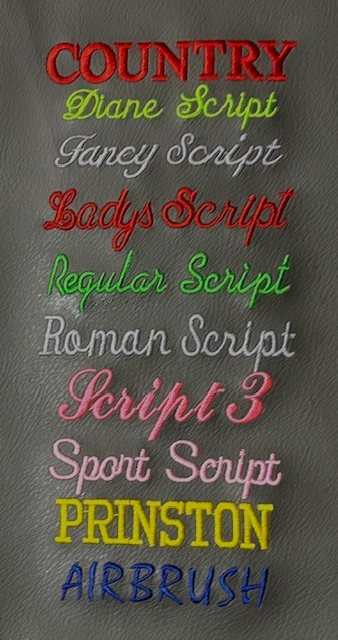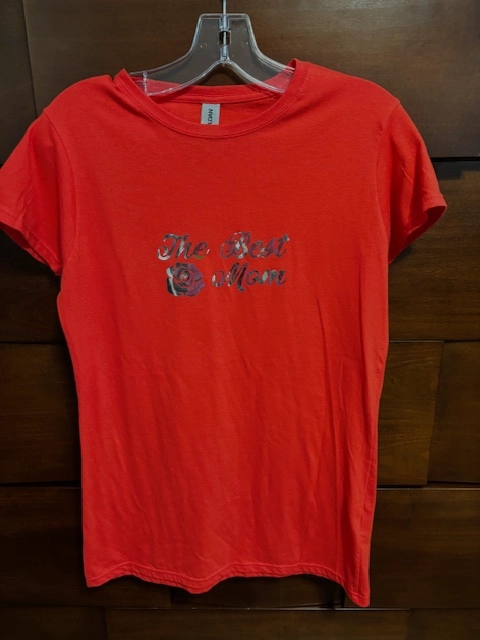The Art of Custom-made Needlework: Unlocking the Keys to Creating Distinct and Remarkable Styles
The keys to creating custom embroidery styles that mesmerize the eye and leave a long-term impact lie in a fragile equilibrium of method, creative thinking, and attention to detail. As we dig right into the world of customized embroidery, we uncover the nuanced interaction between thread choice, stitch complexity, and design customization that boosts a mere garment to a job of art.
Picking the Right Embroidery Threads
When choosing embroidery threads, what vital variables should you consider to ensure the best results for your custom-made designs? The selection of embroidery thread is essential in identifying the final outcome of your embroidered style. One of the key factors to consider is the material of the thread. Various products such as cotton, polyester, rayon, and silk use differing degrees of shine, longevity, and texture. It is necessary to pick a thread material that matches the textile you are embroidering on and straightens with the desired appearance of the design.
Moreover, the weight or density of the thread plays a substantial duty in the appearance of the embroidery. Thicker threads can add dimension and appearance to your style, while finer threads are perfect for elaborate information and small text. In addition, thinking about the shade fastness and washability of the string is essential to ensure that your custom-made styles keep their high quality and vibrancy over time. By thoroughly evaluating these factors and picking high-grade threads that satisfy your certain demands, you can boost the visual charm and long life of your embroidered creations.
Exploring Various Stitch Methods
To look into the world of 'Checking out Different Stitch Methods', one have to realize the intricacies and subtleties that each sewing technique brings to the art of embroidery. Various stitch techniques not only include aesthetic rate of interest however likewise contribute to the total texture and dimension of the design. One prominent stitch method is the satin stitch, which involves closely stuffed parallel stitches to create a smooth and shiny surface, ideal for loading in forms and producing strong details.
On the various other hand, the backstitch is a flexible technique frequently made use of for detailing and including fine information. It includes stitching backwards to create a solid line of embroidery. Furthermore, the French knot stitch adds a tactile component to styles, best for creating textured accents like flower facilities or attractive touches.
Discovering various stitch methods enables embroiderers to play with light, shadow, and deepness within their styles, boosting the visual allure and imaginative high quality of their needlework tasks. By grasping numerous sewing techniques, one can open unlimited possibilities for creating special webpage and remarkable custom-made needlework items.
Incorporating Personalized Design Elements
Having actually discovered the ins and outs of various stitch techniques such as the satin stitch, backstitch, and French knot, the focus currently moves in the direction of integrating tailored design aspects in custom needlework jobs. Personalized style aspects play a crucial function in making needlework tasks absolutely unique and remarkable. One method to integrate customization is by including initials, names, or substantial dates to the layout. This not only includes a customized touch however likewise improves the emotional worth of the needlework piece.
Another means to include individualized style components is by consisting of icons or concepts that hold unique significance to the recipient or reflect their rate of interests and personality. For instance, including a favorite flower, animal, or hobby-related symbol can make the embroidery style a lot more significant and tailored. Furthermore, choosing shades that reverberate with the recipient or align with the designated style can even more improve the customization of the needlework job.
Understanding the Art of Color Sychronisation

One trick facet of color sychronisation is understanding color theory. This consists of understanding exactly how various shades engage with each various other, the feelings they convey, and how they can be integrated to develop visually enticing layouts. By applying shade concept principles, embroiderers can create harmonious color schemes that enhance the total look of the layout.
Furthermore, focusing on comparison is critical in color control. Utilizing contrasting shades can assist specific aspects of the layout pop, improve readability, and create an aesthetically vibrant needlework item. By mastering the art of color coordination, embroiderers can raise their layouts and develop unforgettable pieces that resonate with clients and customers alike.
Enhancing Structure With Advanced Needlework Stitches

Bullion knots, on the other hand, can be used great site to develop twisted, ropelike aspects that add an extravagant feeling to the embroidery. Exploring with these advanced needlework stitches enables you to push the boundaries of typical embroidery and develop really distinct and aesthetically enticing structures in your layouts.
Final Thought
To conclude, the art of customized needlework involves a combination of choosing the ideal threads, discovering different stitch techniques, integrating individualized style components, grasping color coordination, and improving structure with sophisticated stitches. By understanding and carrying out these key aspects, embroiderers can create one-of-a-kind and memorable designs that showcase their creativity and skill. Embroidery enthusiasts can open the secrets to developing attractive and custom items that stand out and leave a long lasting impression.